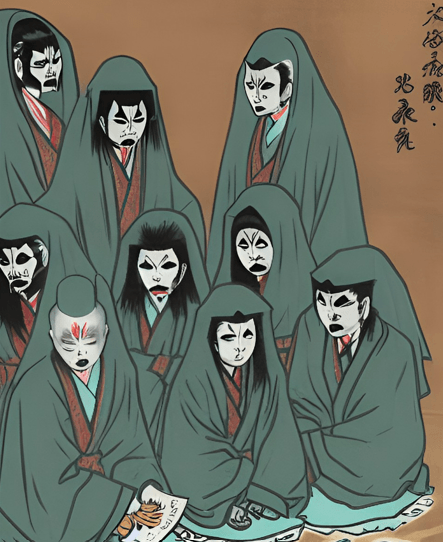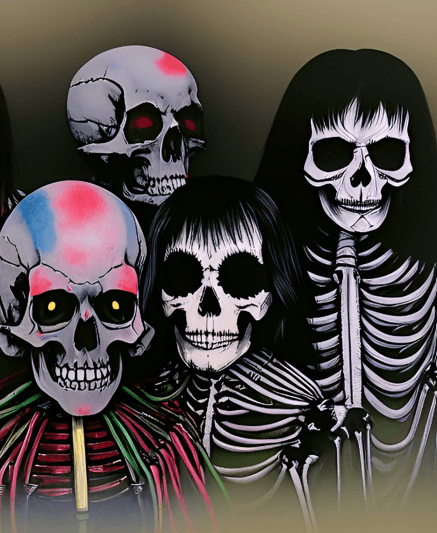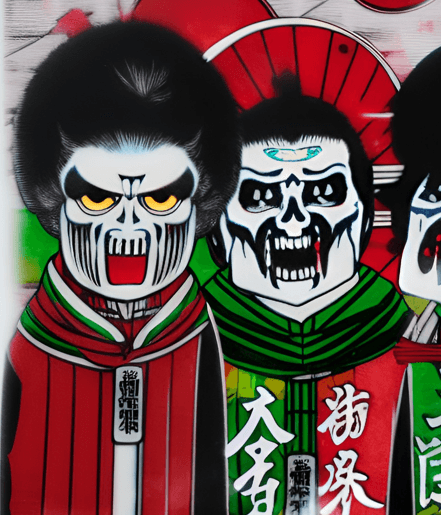Japanese mythology is home to some weird and wonderful creatures. One of the more intriguing are the gaki, sometimes known as the “hungry ghosts”. These ghostly beings are said to be the souls of people who have died in a state of extreme suffering, often due to starvation or other forms of deprivation. Read on to find out more about the gaki!
MORE LIKE THIS: What are Jikininki in Japanese Folklore?
Origins of the Gaki

The origins of the gaki can be traced back to Buddhist teachings, which emphasize the importance of karma and reincarnation. The aim was to teach that the actions we take in life determine our fate in the afterlife. If we live a virtuous life, we will be reborn into a better existence, but if we lead a life of greed and selfishness, we may be reborn as a gaki.
In Japanese folklore, the gaki were also associated with the Shinto belief in ancestral spirits. It was believed that if a family failed to honor their ancestors properly, they might be cursed with the presence of hungry ghosts.
In modern day Japan, the word gaki is a disparaging word used to describe children unkindly, particularly in reference to a hungry, greedy child who is never sated by what they are given.
Gaki Appearance

The gaki are typically depicted as gaunt, skeletal figures with sunken eyes and distended bellies, representing their unquenchable hunger. They are believed to be in a constant state of starvation and desperation, with their bodies showing the signs of extreme suffering.
In some legends, the gaki are said to have long, thin necks that make it impossible for them to swallow food, adding to their torment. They are usually shown as haunting and unsettling figures, which is a testament to their tragic origins as the souls of those who died in a state of extreme suffering.
Ways to Appease the Gaki

In Japanese folklore, there are several ways to appease the hungry ghosts and ensure that they do not haunt the living. One common method is to offer food and drink to the gaki, either in the form of a special meal or by leaving offerings at a shrine or temple.
Another method is to perform rituals and ceremonies designed to honor the dead and ensure that they are at peace. These ceremonies may include offerings of incense, flowers, and other items.
Similar Mythical Beings to the Gaki

In Japanese mythology, there are other similar creatures to the gaki. For instance, the Oni is a type of demon that is often depicted with horns and fangs. Oni are said to be born from the spirits of the wicked, and they are known for their love of mischief and causing harm to humans. In some legends, oni are believed to devour humans, much like the gaki.
Another similar creature is the Yuki-onna, which translates to “snow woman.” This spirit is said to appear on snowy nights as a beautiful woman with white hair and skin. Yuki-onna are known for their cold and unforgiving nature, and they are said to prey on humans who get lost in the snow. Like the gaki, the Yuki-onna are believed to be the spirits of people who died in tragic circumstances.
Away from Japanese mythology, the gaki many similarities to the preta in Buddhist mythology. Preta, also known as “hungry ghosts”, are believed to be the spirits of people who lived a greedy or selfish life and, consequently, suffer from perpetual hunger and thirst in the afterlife. They usually have a bloated belly and a tiny mouth, making it impossible for them to satisfy their cravings.
Types of Gaki

There are said to be several different types of gaki in Japanese mythology. Some are said to be born from the spirits of those who died in extreme poverty or hunger, while others are created by the actions of the living. If someone wastes food, for example, or fails to give proper offerings to their ancestors, they may be creating hungry ghosts.
One particularly terrifying type of gaki is the jiki-ketsu-gaki, which is said to have a giant mouth that covers most of its body. This gaki is said to be able to swallow entire villages, leaving nothing but destruction in its wake.
Get in Touch
Have you ever heard of the gaki? Perhaps you have something to add that you think we have missed in the article? If so, let us know in the comment section below!
For enquiries, contact me at richard@mythologyplanet.com
For more about the Gaki, check out the YouTube video below by Linfamy.
